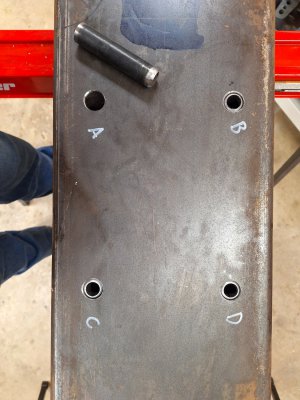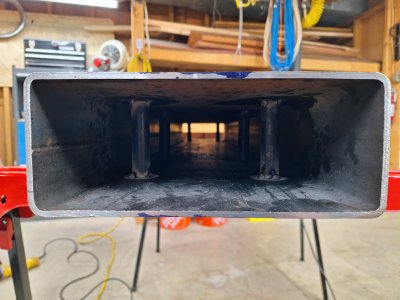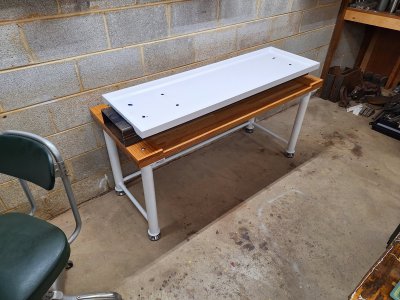- Joined
- Oct 2, 2020
- Messages
- 88
Almost finished with my lathe stand and want some ideas for the torsional beam. To be completely clear, I realize this is on the side of being unnecessarily over-built.
I've got a 3/16 4x10x60" square tube drilled out with penetrators for mounting hardware welded in place. The finished beam will be filled with non-shrink grout.
How would you do this?
Originally I was planning on welding plate to seal up the ends of the tube and then cutting out a window on the underside to pour the grout and then weld shut afterward.
Now I'm thinking, weld the headstock side of the tube only closed and just pour the grout tailstock side up. This is how Taig does their lathe, its simpler, and it would leave a full 7" of grout between the tailstock penetrators and end of square tube.
What do you think?


I've got a 3/16 4x10x60" square tube drilled out with penetrators for mounting hardware welded in place. The finished beam will be filled with non-shrink grout.
How would you do this?
Originally I was planning on welding plate to seal up the ends of the tube and then cutting out a window on the underside to pour the grout and then weld shut afterward.
Now I'm thinking, weld the headstock side of the tube only closed and just pour the grout tailstock side up. This is how Taig does their lathe, its simpler, and it would leave a full 7" of grout between the tailstock penetrators and end of square tube.
What do you think?




